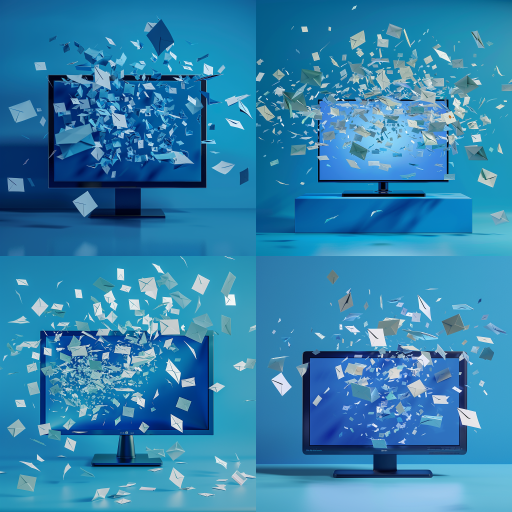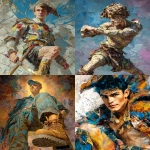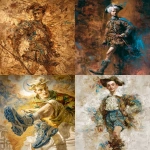Explore the Best AI Image Gallery

Navigating the Ethical Landscape of AI-Generated Media
The advent of artificial intelligence (AI) has heralded a new epoch in creative industries, enabling the generation of media that blurs the lines between human and machine-made creations. However, this transformation comes with substantial ethical implications that merit careful consideration. As AI-generated media increasingly infiltrates various domains—including art, music, literature, and marketing—questions surrounding authenticity, ownership, consent, and societal impact arise. This blog post examines the ethical landscape of AI-generated media, contemplating its ramifications on the creative industry and future trends in this dynamic field.
The Rise of AI-Generated Content
AI-generated media encompasses a vast range of content, from artwork produced by neural networks to music created by algorithms. The tools that facilitate these productions are becoming increasingly sophisticated, allowing even novice creators to harness AI's capabilities. For instance, platforms like Artbreeder enable users to blend images and create novel artworks, while services like DALL-E allow users to produce unique images based on text prompts.
These advancements have democratized creation, empowering more individuals to participate in artistic endeavors. However, this newfound accessibility raises questions about the authenticity of the creative process. Are pieces generated by AI genuine expressions of creativity, or mere replications of existing styles and ideas?
The Role of Ethics in AI-Generated Media
Ethics in AI-generated media can be viewed through several lenses:
- Ownership: Who owns the rights to AI-generated content? Is it the programmer who created the AI, the user who provided input, or does the AI itself possess some level of authorship?
- Consent: In cases where AI models are trained on existing artworks or music, have the original creators given their consent? The use of copyrighted material without permission can lead to significant legal disputes.
- Authenticity and Value: As AI-generated pieces become more common, issues of authenticity emerge. Can a work created by an algorithm hold the same value as one painstakingly crafted by a human artist?
- Impact on Human Creators: As AI begins to take on more roles traditionally filled by human creators, what implications does this have for employment, livelihood, and artistic integrity?
The Creative Industry's Response
The creative industry is currently grappling with these ethical conundrums. Many artists and creators are embracing AI as a collaborative tool rather than a competitor. This partnership model allows for unprecedented innovations in artistic expression. For example, musicians are using AI to generate melodies and harmonies, enhancing their creative process. At the same time, artists are engaging in discussions about the importance of maintaining the human element in art.
Organizations and institutions are also beginning to recognize the need for ethical frameworks surrounding AI-generated content. For example, initiatives aimed at defining best practices for AI usage in creative sectors are emerging, emphasizing transparency, crediting human input, and minimizing copyright infringement.
The Future of AI in Creative Media
As we look to the future, several trends are likely to shape the conversation around AI-generated media:
- Increased Integration into Workflows: AI tools will become standard in creative workflows, with professionals across industries leveraging these technologies to enhance their output.
- Focus on Ethics and Standards: As awareness grows around the ethical implications, industry standards will likely emerge outlining acceptable practices for AI-generated content.
- Greater Collaboration Between Humans and AI: Instead of viewing AI as a replacement, artists may increasingly approach it as a co-creator, fostering synergies that lead to new artistic breakthroughs.
- Legal Developments: We can anticipate ongoing legal debates regarding copyright, ownership, and the establishment of new laws to govern AI's role in creative fields.
Conclusion
The evolution of AI-generated media presents a profound shift in how we perceive creativity. As this technology continues to advance, it is essential to navigate its ethical landscape thoughtfully. By embracing both the opportunities and the challenges posed by AI, we can foster an environment where creativity flourishes, while ensuring the rights and values of human creators are honored. The dialogue surrounding AI in the creative sector is just beginning, and it requires active participation from artists, technologists, policymakers, and consumers alike to shape a future that harmonizes innovation with ethical integrity.
](https://images.ai-img.art/thumbnails/150/8c3bd422d50d35735d8fb33bd314a79e30e5b150129d5d09bdad822a2007593f.webp)


](https://images.ai-img.art/thumbnails/150/3a60737a5b67fa252207ad1ae6db245a26284f53fb5846996bb34515b39ff269.webp)



](https://images.ai-img.art/thumbnails/150/1614d64dd7156c95db952258978be809eb3db8cea4453fec69c49cbdfe63fa94.webp)




